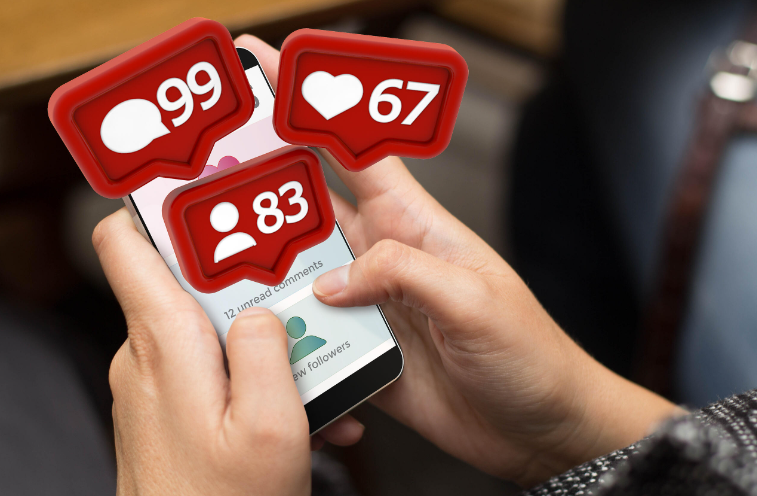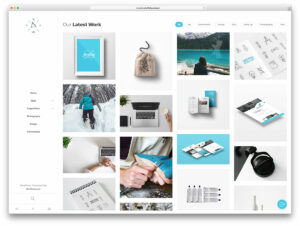Design and implement a successful social media campaign for your online store using a proven model
6 min read
Do you have an online store and would like to increase sales through social media marketing? If you plan and execute a marketing campaign correctly, you can reach new potential customers and convert them into buyers.
To start, it’s good to review the points that are all key to creating a successful campaign:
Setting objectives.
Choosing the right channels.
Finding the right target groups.
Creating attractive ads.
Monitoring and optimising the campaign.
Delivering a good customer experience.
In this blog, we’ll give you tips on how to create a successful advertising campaign for your online store using social media platforms and the MRACE® model, which takes into account the customer’s stage of the buying journey.
Set your goals with ROAS in mind
First things first, let’s start with the basics. Setting objectives will help you define what you want to achieve with your campaign. For example, do you want to increase the number of visitors to your online shop, increase sales or perhaps get new customers? Define your goals clearly and realistically so that they support your marketing objectives.
There are many ways to set marketing objectives. One concrete way of approaching them is the 5s model:
Sell or increase sales.
Serve.
Speak or build customer dialogue.
Save, i.e. improving cost-effectiveness.
Sizzle, building a brand.
Defining your objectives will help you plan the content of your campaign and choose the right channel. The objectives will also help you choose the right KPIs to monitor the progress and success of your campaign. I’ll tell you more about measurement in a moment.
Before launching an advertising campaign, it is a good idea to set a clear ROAS (Return On Ad Spend) target. ROAS tells us how many euros will be returned for every euro spent on advertising.
Good ROAS varies between sectors and companies and setting a good ROAS target depends largely on the objective of the campaign. It is important to monitor the ROAS of your campaign as it will help you to assess the success of your campaign.

When designing the structure of a campaign, you need to consider the purchase path and think about which stages of the path the campaign will be built on. Do you have a warm enough audience to run a campaign with only the Convert stage? Rarely is this the situation to start from. Often you also need to include a Reach phase, which is the way to reach a cold audience.
Different content is needed for different stages, because the buying decision is influenced by how aware customers are of your products. In the Reach phase, content is often interest-generating website content, which is important to appeal to the target audience. This is often done by offering a solution to their problem or by meeting their needs. Product advertising, especially promotional advertising, can also be engaging enough to make the customer take the first step towards a purchase and explore your online store further.
The content in the Act phase often teaches the customer how to use your products. The customer has understood their problem or need, and that they may be able to get a solution from your online store. In the Act phase, it is important to direct the customer to the right products, and provide enough useful information about them to enable them to make a purchase decision they can be happy with.
In the convert phase, the content is often very simple, but even more important. This is where we don’t want to lose the customer to a competitor. This is where the product becomes important, and it is good to have enough information about it. Delivery and payment methods and return conditions will also be of interest to the customer, so make sure that this information is easily accessible. Possible promotions, discounts and customer benefits are also often factors that often influence the final purchase decision.
During the Engage phase, existing customers are offered unique benefits. How do you turn your customers into loyal customers? The only limit is often your imagination, and even very small things often become meaningful. For example, a small surprise in a package can make your customer surprised and delighted, which is likely to leave a positive impression and emotional impression of the purchase. The next time the need to buy arises, you are likely to be the first thing on their mind.
Choose channels and reach the right audience
Do you know who your potential customers are and what their needs are? As a tool to identify customer needs, we recommend creating buyer personas.
With the information from the buyer personas, you can target your marketing campaign to the right people with the right messages.
Choose channels based on where your target audience spends their time and which channels work best for your products, without forgetting your objectives. Not all social media platforms are the same. Each channel has its own unique characteristics and user base.
The choice of channel will be influenced by factors such as:
Available budget > LinkedIn is more expensive to advertise on than Meta platforms.
Preferred targeting options > However, LinkedIn allows you to target uniquely.
Available advertising material > To advertise on TikTok, you need video.
Measurement, optimisation and data-driven decisions are key to every social media campaign
Measuring campaign performance is one of the most important aspects of running a marketing campaign. Measurement helps you understand how the campaign has performed and what factors have contributed to its success. It also helps you learn from the successes and failures of your campaign so that you can produce more successful campaigns in the future.
There are many ways to monitor campaign performance. Online, you can measure your customer journey throughout the purchase path and view campaign performance at different stages of the MRACE® model.
At the Reach stage, you can measure, for example, advertising reach and website traffic.
In the Act phase, you can measure the consumption of website content.
In the Convert stage, you can measure things like basket additions, number of purchases and average purchase value.
In the Engage phase, a good measure of online sales is the number and value of repeat purchases.
The key is to focus on the metrics that are most relevant to your online store and your campaign objectives.
Measurement also helps to optimise your campaign. If you notice that a target group or content is not performing as expected, you can make changes to your campaign and monitor the impact. Changes can include changing images, tweaking ad copy or adding completely new target audiences. This will help you improve campaign performance and achieve your goals more effectively.
Rarely is any advertising campaign perfect from the start. It’s important to monitor the performance of your campaign and make improvements where necessary.
Take advantage of tools to improve efficiency and effectiveness
There are a myriad of tools available to help you run your marketing campaigns. For social media campaign implementation, Smartly is unbeatable. In short, Smartly is an optimisation, automation and scaling tool for paid social advertising that allows you to work efficiently and agilely while saving time.
Smartly’s automated rules allow you to create orders based on your goals. Based on the rules, Smartly handles ad optimisation and budget scaling for you, ensuring that the money you put into your campaign isn’t wasted. In the Finnish digital market, our social media team uses Smartly for campaigns on Facebook, Instagram and TikTokk.
Find out more about Smartly’s amazing capabilities for building and optimising social media campaigns.
Consider including other channels to boost your bottom line
We just talked about building a social media campaign, but it’s worth noting that if your goals are high, social media alone may not be enough. Therefore, it’s worth considering whether to include other channels as well. Multi-channel marketing offers the opportunity to broaden your target audience. By advertising through multiple channels, you can reach different people and ensure that your message is seen and heard by as many potential customers as possible.
Multichannel also increases the visibility and memorability of your campaign. People are exposed to a huge number of ads and messages on different channels every day. By implementing a multi-channel campaign, you ensure that your message is seen more often and in different contexts.
I recommend that you include at least Google Ads and email marketing. This way you can reach people searching for your products on the Google network and get personalised communication about the campaign content via email.





